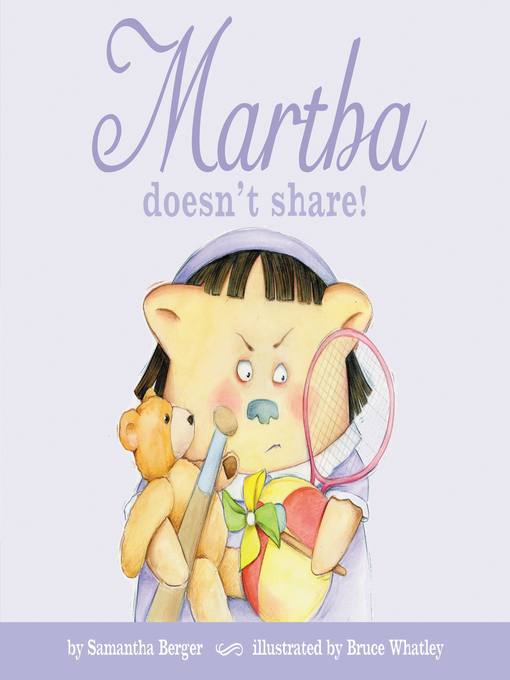
Martha Doesn't Share!
Martha Doesn't
کتاب های مرتبط
- اطلاعات
- نقد و بررسی
- دیدگاه کاربران
نقد و بررسی

July 19, 2010
In addition to not saying sorry, Martha the otter has little
interest in sharing ("Martha has a new favorite word, and that word is... Mine!"). When Martha refuses to play nice, her parents and brother leave her to play alone, and she soon discovers that "it's hard to ping when you don't have someone to pong." Accompanied by Whatley's expressive pencils and watercolors, Berger quietly reminds readers that sharing, while sometimes difficult, is more fun. Ages 3–6.

August 15, 2010
Martha (her new favorite word is "mine") is more than a bit reluctant to share her toys with her baby brother. Solution? Her family ostracizes her until she capitulates. Martha is an appealingly expressive and self-possessed preschool sea otter, and the lineup of items she calls "mine" is quite funny (a lava lamp, a cupcake, a potted plant, a chair, all the teddy bears). As rendered by Whatley, her family is nicely rounded and their expressions patient and loving. The text is simple, nicely paced and to the point: " 'K, Maffa,' says Edwin as he waddles away." But the resolution is a bit flat-footed, coming after Martha is left to think about sharing: "She thinks and thinks and thinks about it." This thinking approach would seem to be a developmental unlikelihood for a preschooler as young as Martha. Young listeners who don't simply feel sorry for the lesson imposed on her may feel manipulated or even slightly outraged on her behalf. Still, for Martha's fans or for parents looking for a book to help deliver a message, this may be just the ticket. (Picture book. 2-5)
(COPYRIGHT (2010) KIRKUS REVIEWS/NIELSEN BUSINESS MEDIA, INC. ALL RIGHTS RESERVED.)

October 1, 2010
PreS-After learning how to apologize in Martha Doesn't Say Sorry (Little, Brown, 2009), the stubborn little otter returns to master a new lesson. She overuses "mine," her new favorite word, until she is left performing magic tricks without an audience, putting on puppet shows with only one puppet, and playing Ping-Pong without a partner. Through the gentle encouragement of her parents, Martha realizes that she can have more fun if she shares. The watercolor and colored-pencil drawings, with few props and no backgrounds, focus on each character's body language and facial expressions. Through her scowl, up-turned snout, and raised eyebrows, Martha's feelings should be readily evident to youngsters. The simple story line offers nothing new, but fans of other girly animal characters like Kevin Henkes's Lilly, Ian Falconer's Olivia, and Russell and Lillian Hobans' Frances will gravitate toward the lavender cover and feminine accent font.-Rachel Kamin, North Suburban Synagogue Beth El, Highland Park, IL
Copyright 2010 School Library Journal, LLC Used with permission.

























دیدگاه کاربران